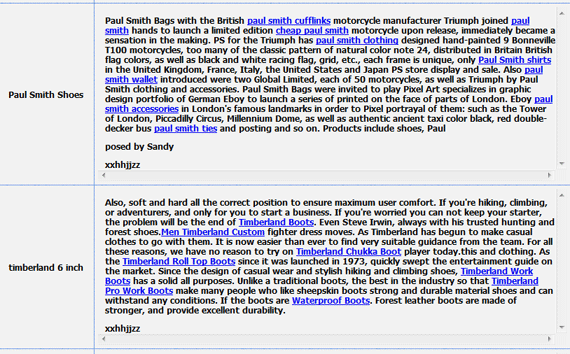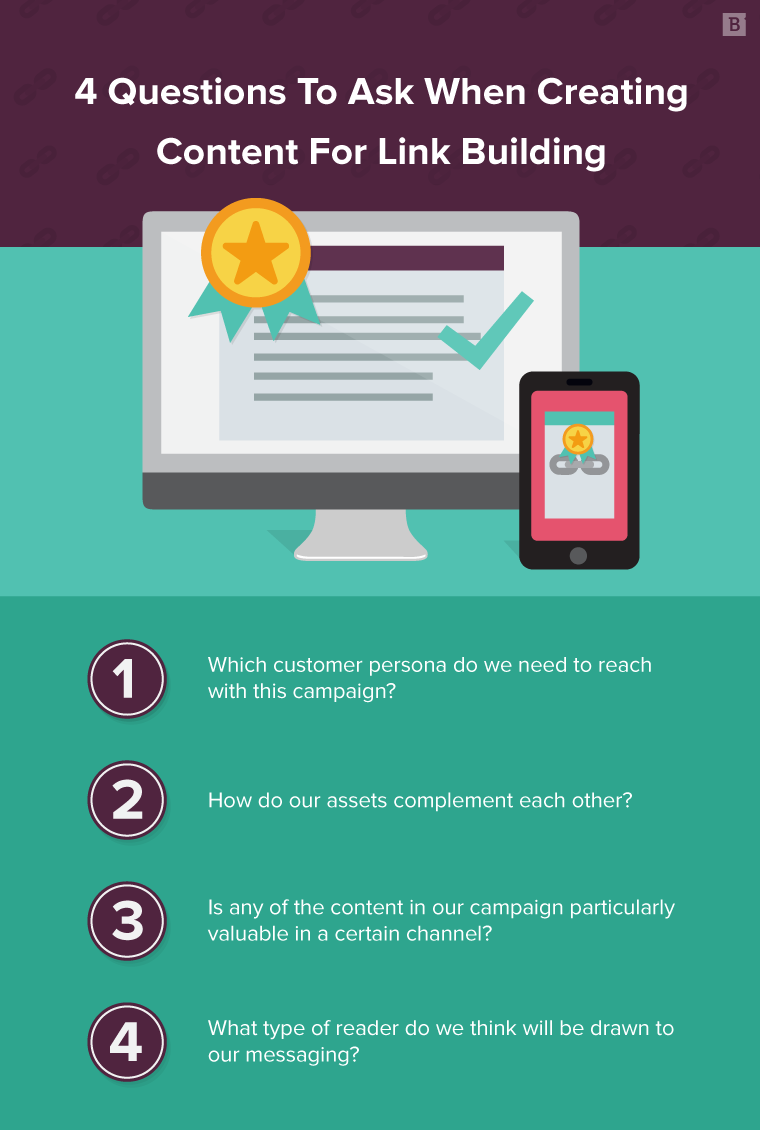At its best, link building used to be a strategy brands could use to increase keyword rankings and gain attention by expanding a company’s reach throughout the web. At its worst, the tactic allowed organizations to manipulate search results through black-hat methodologies, such as link spamming. Those days are gone.
With new algorithms, Google has largely squashed the effectiveness of black-hat link building. What’s more, the search giant’s use of artificial intelligence has made many tried-and-true methods less effective. It’s time for businesses to change their expectations and practices in response.

Link Building in 2018
Google still considers inbound link profiles to be a top ranking factor in 2018. A good link building plan can fuel gains in Domain Authority, a metric that assesses the quality of content associated with a domain.
Any link from an external source to your site can be considered a backlink or inbound link, as it is driving traffic from that location into your domain. While you can’t control how other parties link to your site, there are ethical, powerful ways to generate these links and build your brand’s presence online.
The nuances of a link building plan will vary between organizations, but here’s a guide to the best practices shaping the industry in 2018.
First, Here’s What Not To Do:
Outdated link building tactics:
- Creating private domains where content could be distributed, often duplicating materials published elsewhere.
- Using general content directories to republish materials on sites designed exclusively to host backlinks.
- Paying third-party sites to host content or otherwise backlink to a company’s domain.
- Spamming forums and comment boards with backlinks.
Google has explicitly countered many of these methods. Its formal link scheme guidelines mention that excessive link exchanges, buying or selling links or automatically distributing backlinks can all negatively affect search rankings. Avoid black-hat agencies that make big promises around such strategies.
Instead of aggressively publishing content for no other reason than to create a link somewhere, organizations should focus on creating valuable, unique content that industry thought leaders will want to link to and discuss on their websites.
Link Building Tactics to Try in 2018
Here are a few tactics to keep in mind when creating new materials that you expect to generate inbound links:
Publicize content with third parties: It used to be common to syndicate posts in duplicate forms across multiple publications. The core strategy of widening the scope of your content is still valid, but posting redundant content is increasingly problematic. Instead, partner with third-party blogs and news outlets to encourage a mutually beneficial story. For example, offer to make one of your subject matter experts available for an interview about the broad topic of your story and then link back to the specific piece.
Develop link awareness: Use SEO tools, such as Moz or SEMrush, to identify the top sites linking back to your content and consider reaching out to expand those relationships. You can also conduct Domain Authority research on publications’ influencers that are relevant to your industry and contact those prospects to see if they’d be interested in working with you in some way, whether for content creation or syndication.
Set campaign goals and KPIs: Clear goals and key performance indicators are necessary to measure success. More on this in a bit.
Take advantage of guest posting: Creating content specifically for the purpose of publication on a third-party channel can be valuable for all parties involved. The third-party website gets a unique perspective from a key player in your niche and you gain brand recognition and links back to your site. You can also ask an influencer to guest post on your site, with the expectation that the individual will want to share the post later down the line.
Regardless of the specifics of the plan, make sure that any guest post has a clear purpose at the outset, a strong editorial review process and firm expectations for all parties to ensure the final product is precisely relevant to both your brand and the guest’s area of expertise.
Social promotion: Social media creates opportunities for those interested in your industry to share your content with ease. Spread the message with posts that are specifically designed for the way people communicate on the channel you’re using. For example, share a custom image and article extract on Pinterest, or have a respected member of your organization share an opinion on the content on LinkedIn.
The key to gaining legitimate backlinks is building out content that influencers will feel compelled to share. Include valuable proprietary knowledge, be specific to make content easier to share and focus on specific audiences to attract blogs and news sites that reach niche interest groups.
With an idea of best practices in mind, you can focus on how to optimize SEO to build out your link building ideas.
1. Building an SEO Foundation for Link Building Success
Getting people to share and link to your content is only possible if they can find it in the first place. Your content should rank well in search, making it easier for potential followers and site visitors to share and link to your web pages.
Maintaining search quality when relying on third parties
You can’t control much if a news outlet decides to write about you, but if you are doing interviews or establishing a content syndication plan, the sites you’re working with will probably allow you to either approve or at least make suggestions on articles before they are published.
Furthermore, self-syndication sites, such as Medium, give you complete control over what you publish. With that in mind, some traditional keyword and anchor text best practices are relevant to link building.
For example, you’ll want to make sure sites you can directly influence aren’t filling your content with excessive or problematic links, either to other external sources or to your site.
Having duplicate links on the same page, such as multiple embedded links to a single product page, is a punishable offense in Google’s eyes, as the it’s a sign of link spamming. Similarly, when your links are often attached to the same anchor text, it raises red flags because Google will see it as a sign of using a bot for content creation – an old black-hat link building practice.

If you’re posting variations of your content on third-party sites, make sure the linking strategy is especially thoughtful. If you get sloppy, Google may not only punish the content because of the linking, it could also take a deeper look at whether you are automatically distributing duplicate content to manipulate your Domain Authority. Google recently sent out a firm reminder that it is actively investigating linking strategies that utilize spammy linking schemes.
2. Setting Benchmarks to Measure Link Building Performance
SEO via link building is dependent upon identifying the goals you want your content to achieve and refining the strategy accordingly. Usually, one goal reigns supreme – improving search engine results page (SERP) rankings. The higher up the page you appear, the more likely you are to get eyes on your content.
A SERP ranking can be complicated, as it comes down to more than just selecting a good keyword and using it effectively. Instead, content ranking is greatly influenced by the Domain Authority of the site on which it is published.
When distributing content to third-party websites, such as blogs or news publications, partner with outlets with a high Domain Authority. This signals to Google that well-respected sites are linking back to your content, potentially improving your content’s organic ranking.
You’ll also want to make sure that whatever you share has a high content score. This metric measures the depth and comprehensiveness of content relative to the keyword being searched. A low score results in lower rankings.
Content score is typically calculated by identifying the primary topics covered within stories referencing a keyword and by using artificial intelligence to identify the comprehensiveness of a story.
Google’s content score ratings can be a bit difficult to uncover, but specialized tools, such as MarketMuse, can provide insights into how deep a piece of content is.
As you develop specific link building campaigns, consider how various metrics intersect to inform your goals and measure performance. For example:
- If you’re trying to partner with major industry thought leaders, you may want to measure success based on engagement metrics such as pageviews per session and average time on site. Improvements would show that you are attracting the right audience.
- If you want to improve visibility, focus on getting your content onto larger, relevant, external sites, and home in on metrics associated with the volume of people visiting your site (average visitors per month) and what they do once there.
- If you want to strengthen your brand’s reputation, identify the average Domain Authority of sites linking back to you, pin down the low authority or irrelevant sites and use Search Console to disavow those links.
There isn’t an all-encompassing set of link building benchmarks. What’s important is that you map your content KPIs to the goals of your link building program.
Now that you have a big-picture idea of the link-building tactics that could work for you, it’s time to think about the content that will drive your strategy.

3. Using Quality Content as the Basis for a Link Building Plan
Instead of putting resources into creating large quantities of content to generate backlinks, businesses are better served by taking time to tell engaging stories and develop complementary distribution strategies. For example, creating an infographic that builds on the message of a white paper can fuel backlink creation because infographics tend to be more shareable on social and likely to get reposted by relevant industry stakeholders.
Start with well-defined content goals:
Your link building strategy should begin with a target. Ask your team:
- Which customer persona do we need to reach with this campaign? Beginning with customer analysis helps you identify key demographic issues and similar strategic details that can help you fine-tune your content strategy for various types of readers.
- How do our assets complement each other? You can often syndicate a message without duplicating content by communicating the same key brand narrative through multiple content formats. Consider how various assets can complement one another and link back to each other as they are shared across various channels.
- Is any of the content in our campaign particularly valuable in a certain channel? People go to Facebook for different reasons than they go to LinkedIn. Identify if any of your content will be especially resonant with specific social platforms and plan accordingly.
- What type of reader do we think will be drawn to our messaging? Knowing your reader can help you identify the third-party sites that are best suited to distribute your content. Every media publication has a slightly unique demographic it reaches. Dig into audience personas so you can align content with the audience personas of third-party sites you hope will link back to it.
With these questions answered, you can take a strategic approach to reaching out to media contacts, identifying people to share your content with and making sure every backlink comes from a relevant, legitimate source.
Always focus on relevance and quality
It can’t be overstated. In order to make your content valuable to an audience, it has to be high quality.
Because Domain Authority is a defining metric in SERPs, you need your content to be recognized by the best publications and influencers. Backlinks from authoritative sites improve your rankings, so targeted, high-volume publications are critical to link building success.
Great content is ultimately the central component of advanced link building.
Conclusion: Be patient and avoid black-hat link builders
Immediate results are often the primary measure of success for marketers. It’s a little like the box office, where sales in the first weekend often dictate success. Link building is a bit different.
You can certainly expect some immediate results when a major post goes live, but the strategy is so dependent on ongoing relationship-building that it can take time to get momentum. You may have to prove yourself to a major publication by working with a smaller but similarly relevant website first. It may take a few small-scale projects before anybody will engage in a major story highlighting your brand.
Don’t give up and don’t change direction so often that potential partners can’t keep up. Set long-term concrete goals to create a link building snowball effect.





